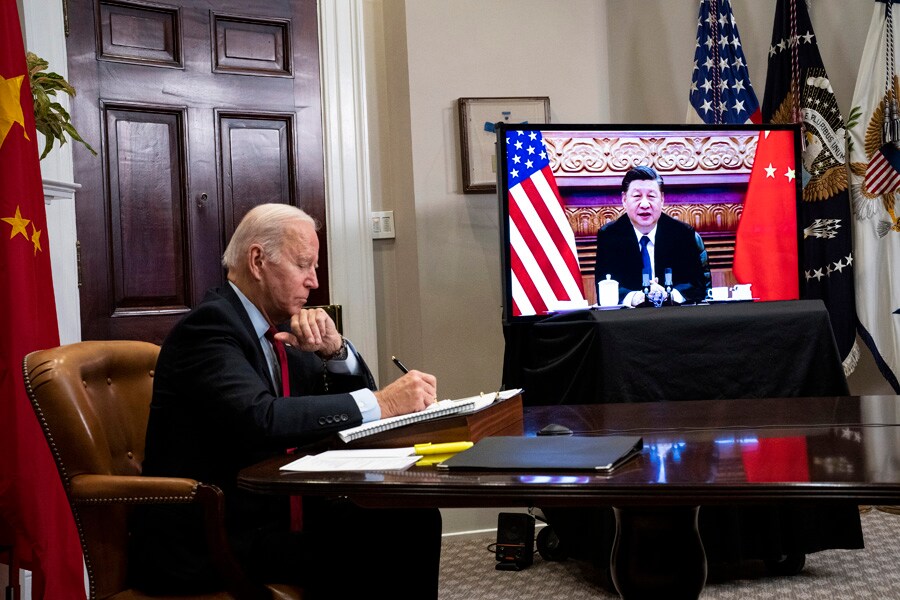
As China speeds up nuclear arms race, the US wants to talk
For the first time, the United States is trying to nudge China's leadership into a conversation about its nuclear capability, focusing the talks first on avoiding accidental conflict, then on each nation's nuclear strategy
 President Joe Biden meets virtually with Xi Jinping, the president of China, during a virtual summit at the White House in Washington, Nov. 15, 2021. President Biden raised the possibility of “strategic stability talks” with Xi Jinping. (Doug Mills/The New York Times)
President Joe Biden meets virtually with Xi Jinping, the president of China, during a virtual summit at the White House in Washington, Nov. 15, 2021. President Biden raised the possibility of “strategic stability talks” with Xi Jinping. (Doug Mills/The New York Times)
The United States has no nuclear hotline to Beijing. The two countries have never had an in-depth conversation about American missile defenses in the Pacific, or China’s experiments to blind U.S. satellites in time of conflict.
And Chinese officials have consistently rejected the idea of entering arms control talks, shutting down such suggestions by noting — accurately — that the United States and Russia each have deployed five times more nuclear warheads than Beijing possesses.
President Joe Biden is seeking to change all that.
For the first time, the United States is trying to nudge China’s leadership into a conversation about its nuclear capability. U.S. officials, describing the American strategy, say Biden and his top aides plan to move slowly — focusing the talks first on avoiding accidental conflict, then on each nation’s nuclear strategy and the related instability that could come from attacks in cyberspace and outer space.
Finally — maybe years from now — the two nations could begin discussing arms control, perhaps a treaty or something politically less complex, such as an agreement on common norms of behavior.
©2019 New York Times News Service







